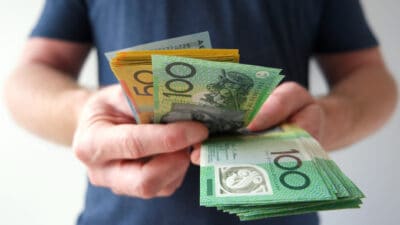According to S&P Global historical data, the All Ordinaries Index (ASX: XAO) has delivered an average annual return of 9.35% over the past decade, including dividends.
The S&P/ASX 200 index (ASX: XJO), meanwhile, has compounded at more than 9% per annum over the last 10 years, dividends included.
When you also factor in the power of Australia's franking credits system, the total return rises to an average compounding rate of 10.6%. This is comparable to most global equity markets.
(Note, this measures the change in value 10 years to the day, from 29 November 2014.)
In other words, it's been a good decade for the stock market. But can we expect more of the same ahead of us?
Here's what to look out for over the next 10 years (bonus: and why long-term investing in ASX shares might be your best bet).
What were the ASX returns over the last 10 years?
The past decade has been kind for ASX returns, with the ASX 200 delivering consistent gains despite some years of volatility.
The broader market has managed a COVID-19 pandemic, an inflation crisis, and a 'crash' during 2022, not to mention various blips before that. And still, Aussie markets have posted numerous new all-time highs this year.
Strong contributions from key sectors like mining, banking, and healthcare have driven the long-term performance, as has the consistent payout of dividends, which make the ASX a favourite for income-focused investors.
In fact a recent Janus Handerson report found several Australian companies persistently in the list of top 20 dividend-paying companies.
But there's devil in the detail — or data, in this instance.
Firstly, positive years dominate. Over the last century, 81% of years have delivered positive returns on the ASX. From 2013 – 2023, this trend continues, with eight out of the ten years in the green for the All Ords. If we finish higher this year, the trend will have remained in place again.
Second, dividends are powerful. With franking credits and reasonable dividend yields, Australian shares have a unique edge over their global counterparts.
Dividends accounted for a significant portion of the total return for the ASX 200 – roughly 400 basis points per year on average and 500 basis points with franking credits. From the average ASX return of 10%, that's literally half the value.
Finally, compounding works wonders. ASX returns over a decade compound to remarkable levels. For instance, a $10,000 investment in the ASX 200 exactly 10 years ago would have grown to $23,870 as of today's date, with dividends reinvested.
With all eligible franking credits, the hypothetical investment is worth $27,461. Reinvesting dividends would have grown significantly beyond the index's nominal price increase.
What does this mean for the next 10 years?
One key takeaway from this historical performance on ASX returns is the importance of patience.
As the Finder 2024 Wealth Building Report highlights, holding an index fund tracking the ASX 200 over a 10-year period is 98% likely to generate positive returns — higher than the All Ords average.
Compare that to shorter timeframes, where returns are more unpredictable, and the outlook for the next decade is fairly bright.
And even though past performance is not a guarantee of future returns, history does provide valuable insights.
For instance, the Finder report also found that approximately 7.7 million Australians now own shares, reflecting a nearly 40% participation rate. This may have also helped ASX returns.
The trend has been up over the last three years, bringing more capital into the system. Part of this stems from flows generated by Australia's superannuation system.
If we see similar returns to the past decade – let's say 9% – then we can expect a similar investment outcome. That $10,000 will compound to $23,870, assuming a perfect world.
Different hypothetical outcomes are seen below:
| Potential return ($10,000 starting) | Final value (note: hypothetical) |
| 7% p.a. | $19,671 |
| 9% p.a. | $23,870 |
| 11% p.a. | $28,394 |
Foolish takeaway
So, let's take stock of where we're at. For one, we can't predict the future. And two, investing does carry risk.
But the data is in our favour. Shorter time frames lead to more uncertain outcomes. But as time lengthens, the outcomes become more certain, smoothing the risk and compensating with plenty of reward.
That is, left to compound over long periods – say, five or ten years – the data shows ASX returns are positive more often than not.
That's the kind of risk-to-reward I'd wager on, one that's well supported by facts and logic and the one thing we all have on our hands – time.










